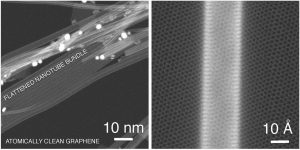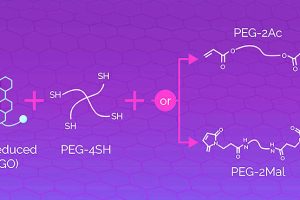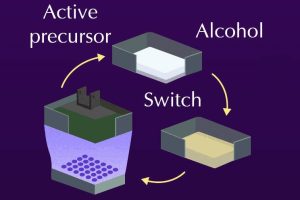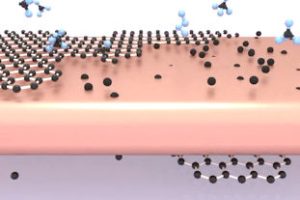
But not because the graphene acts as a parallel conductor.
Instead, temperature-dependent transport measurements indicate that the graphene substrate reduces the tunnelling barrier heights between nanotubes, according to the paper ‘Enhanced tunneling in a hybrid of single-walled carbon nanotubes and graphene‘ published in ACS Nano.
The van der Waals interaction between the graphene and nanotubes was actually strong enough to collapse the circular nanotube bundles into flat ribbons.
It is poor tunnelling that has been the bain of meshes of nanotubes, which individually conduct well end-to-end but don’t pass electrons from tune to tube. In the presence of graphene, sheet resistance was reduced by at least 50%.
“This is a comparable improvement as that obtained through gold chloride doping”, said the researchers in the paper. “However, while Raman spectroscopy reveals substantial changes in spectral features of gold chloride doped nanotubes, this does not occur with graphene.”
By pushing both buttons – adding both a graphene substrate and doping with gold chloride, sheet resistance can be as little as 36Ω/square.
Clean random nanotube carbon nanotubes were driven onto the graphene sheet electrodes to form a dense network using a temperature gradient – a process called thermophoresis.
Boosting tunnelling in this way is seen as another step on the road to a carbon-based replacement for thin-film metal oxide transparent conductors such as ITO.
Aalto University worked with the University of Vienna.
“This is really an ingenious approach,” said Vienna group lead scientist Kimmo Mustonen. “The charge transport in nanomaterials is very sensitive to any external factors. What you really want is to avoid unnecessary processing steps if your goal is to make the ideal conductive film.”
“We of course knew that the interaction is quite strong,” he added, “For instance, think of graphite – it is just a large number of graphene layers bound together by the same mechanism. Yet we did not expect that it has such a strong impact on conductivity.”
 Electronics Weekly Electronics Design & Components Tech News
Electronics Weekly Electronics Design & Components Tech News



